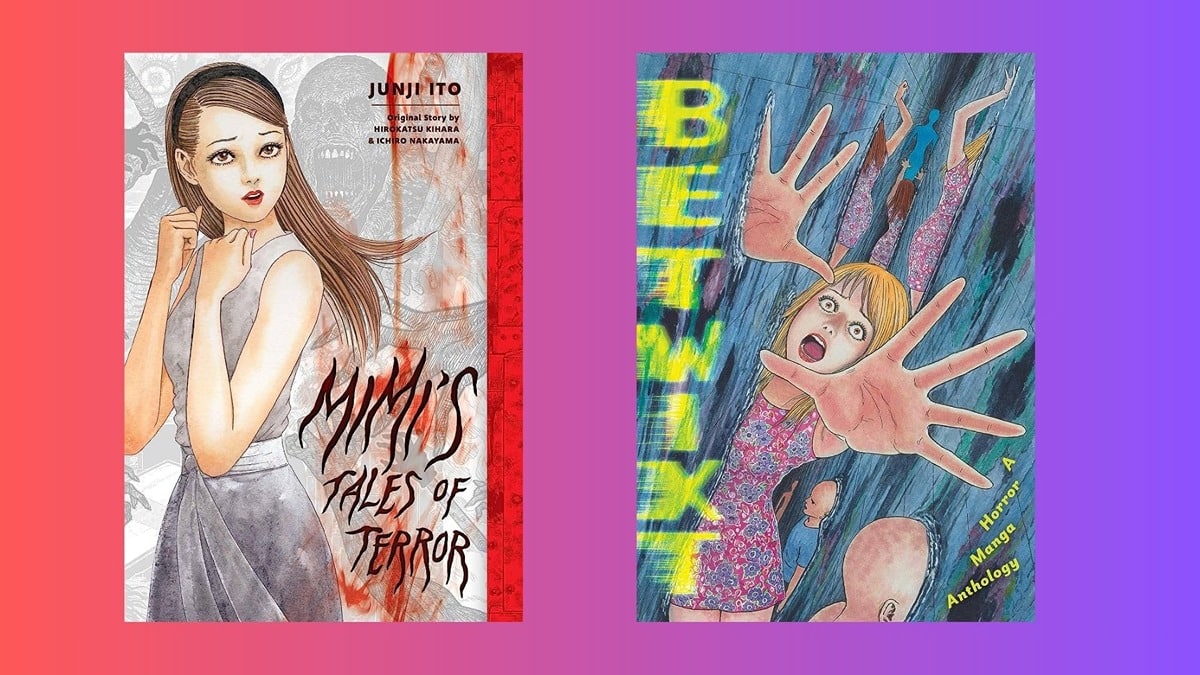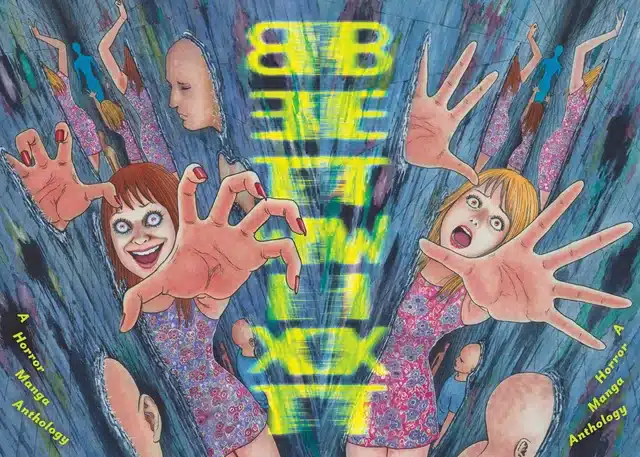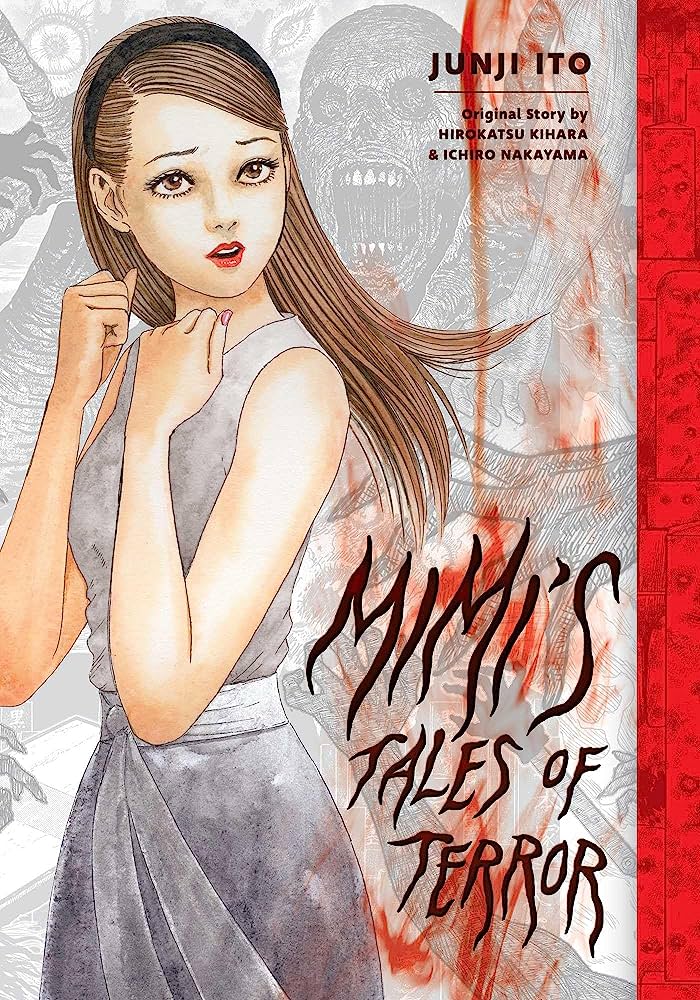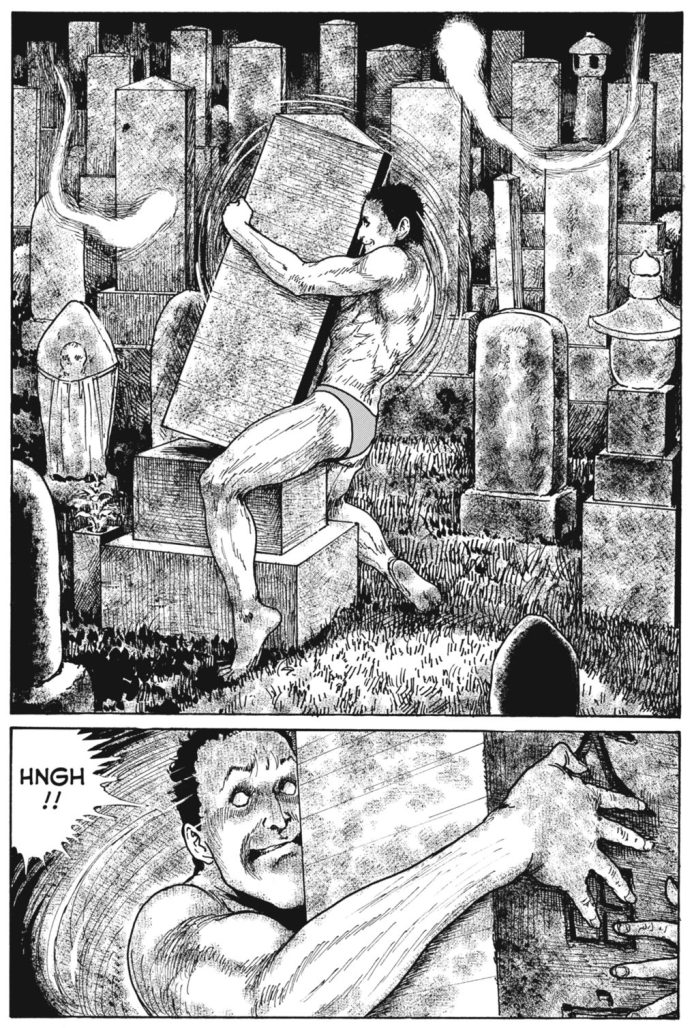The Horror anthology is one of the most treasured forms of storytelling in fiction. It can be argued that when it comes to short fiction, few other genres thrive as much in it as horror. It’s in the intimate nature of the genre, in its ability to put fear under the microscope and then lock it in with characters that have no choice but to face it. It’s like getting thrown into a cage with a rabid wolf. There’s no escape. You have to acknowledge the wolf.
Short horror stories take that dynamic and fine-tune it so that each bout with fear hits harder in quicker fashion while also managing to haunt the reader. New manga horror anthology Betwixt and Junji Ito story collection Mimi’s Tales of Terror achieve just that. Published by Viz Media, each book carries a series of stories that reach deeper into darkness than other stories of their kind to uncover unconventional horrors. Reading them both back to back or simultaneously is asking for a steady stream of nightmares to take up residence in your mind, but they are worth the pairing given how much they value veering off the beaten paths of the genre.
Betwixt is a curious one. It’s divided in two halves, one holding stories by Japanese manga artists and the other by American creators. Featuring a striking cover by Junji Ito, the Japanese side is represented by Ryo Hanada, Aki Shimizu, and Shima Shinya, and it reads like a regular manga (from right to left). The American side is represented by Becky Cloonan and Michael Conrad, Leslie Hung and Sleone Leong, and Hua Hua Zhu, and it requires the reader flip the book so it can read like an American book. The Ito cover stretches from front to back so each side has a piece of the overall image.
Mimi’s Tales of Terror, on the other hand, pulls readers in with adaptations of Japanese urban legends taken from the works of Hirokatsu Kihara and Ichiro Nakayama. It follows the titular Mimi, a university student that is always at the wrong place at the scariest time to witness strange phenomena. It starts off simple, with a couple of pages-long story of Mimi in a car looking at what seems to be a decrepit old lady balancing herself on top of an electrical pole. It sets the tone for what’s to come, and some of the things that follow can easily be regarded as some of Ito’s most disturbing.
Great horror anthologies make sure to feature at least one story that can crawl underneath readers skins to make reading the other stories compulsory. Each of the anthologies here carries one such story.
For Betwixt it’s Shima Shinya’s “The Window,” a story about a house with a window that points to a neighboring location that’s said to be haunted. The characters here hover over the tale of the haunted window as a kind of unspoken dare that tests their ability to resist looking out of it. It speaks to how people opt for eavesdropping on neighbors whenever something bad happens rather than looking out for them in those situations. It’s more about how people resist stepping in when something bad is happening next door. We stick to the safety behind the window, willfully avoiding getting involved with the unpleasantness that’s taking place right next to us. We don’t mind witnessing ugliness, but we do mind stepping into it.
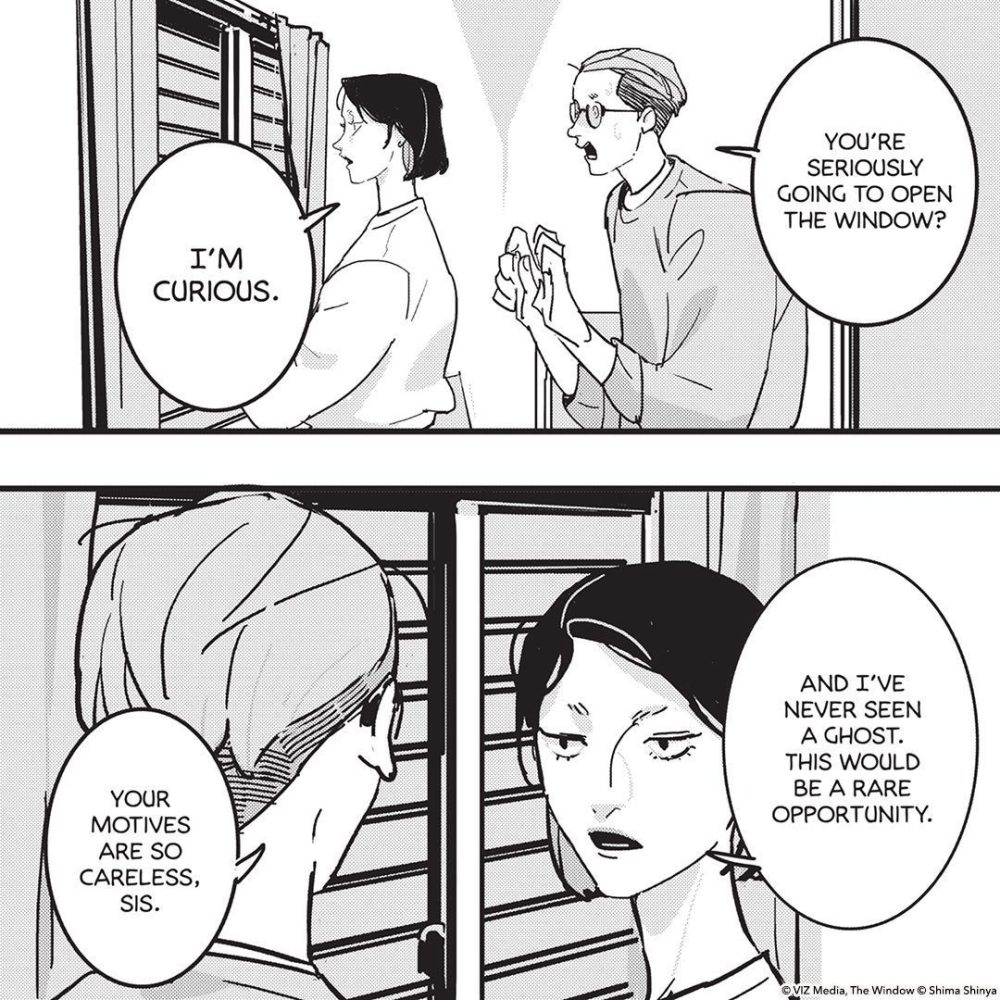
For Mimi’s Tales of Terror, Ito gives us one of his most bizarre stories yet. Titled “Graveman,” it follows the titular Mimi moving to an apartment overlooking a graveyard. Strange noises and moving tombstones ensue, and they all seem tied to Mimi’s neighbor, a bodybuilder looking for an audience.
As far as pure weirdness is concerned, this is one tale that takes expectations and buries them 12-feet deep. It’s just a different kind of terror. It flirts with existentialism from a physical point of view, turning body image and the need for it to be recognized and validated into its own kind of madness.
There’s a lot of complexity to this story. It doesn’t settle for the more hyperbolic aspects of it. For instance, the titular Graveman can also be taken as a sort of addict that looks to satisfy his need for attention from whatever source that is available to him. It so happens that his place is right next to a cemetery and that the dead seem to have no qualms with being an audience for the body builder. There’s sadness underlying it all as well. The man views physicality as a means to showcase his persona, to accrue personal value. That he gets this from the tombstones he turns to face him speaks volumes to our need for visible recognition and how desperate it can make those that crave it.
The anthologies discussed here are the stuff horror fans’ dreams are made of. They prove that smaller bites of terror can scare just as much as long-form horror so long as their creators are willing to step further into the darkness. Mimi’s Tales of Terror and Betwixt achieve this with darkness to spare. Don’t just read one. Read both and prepare yourself for the night. You’ll want to sleep with the light on.


